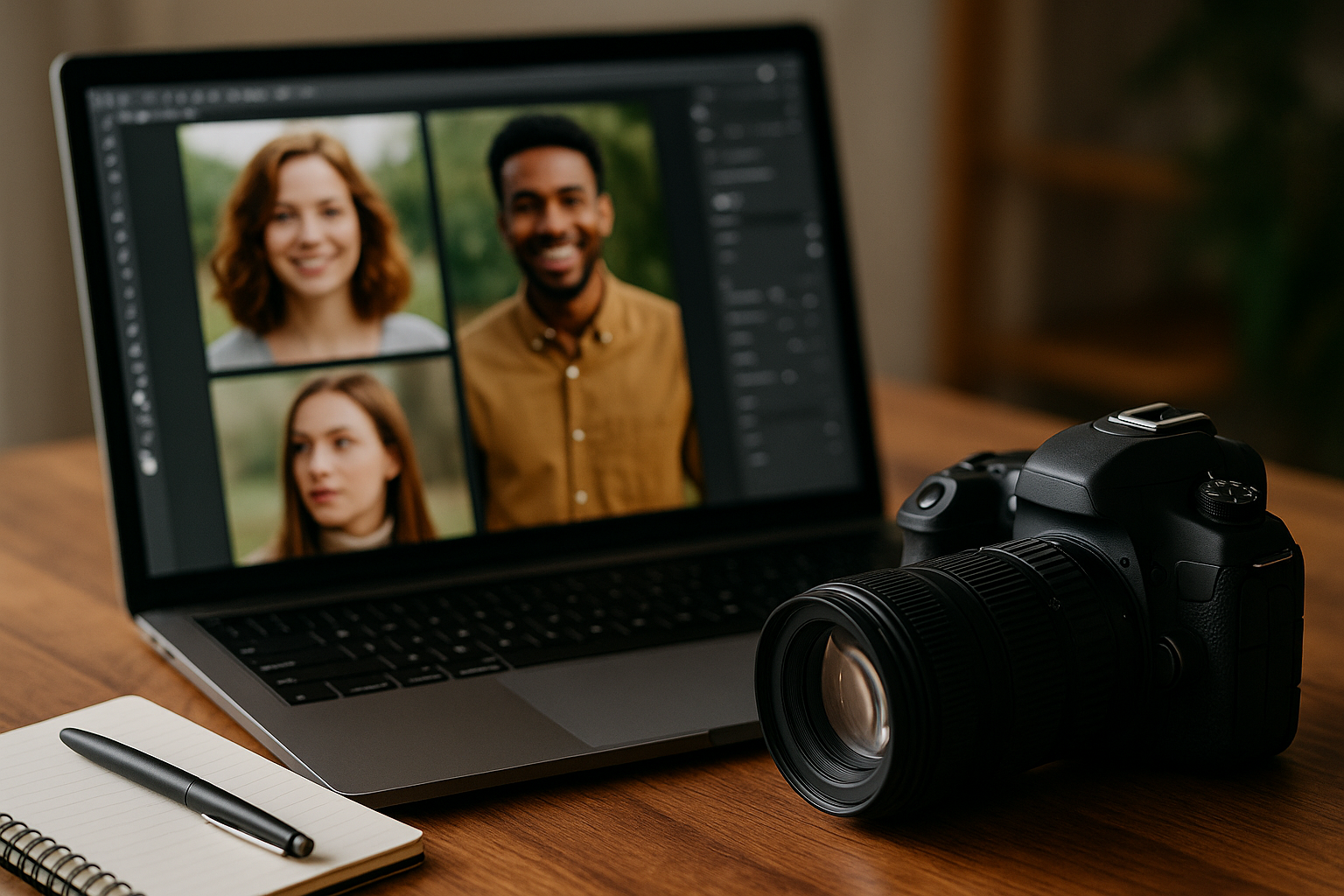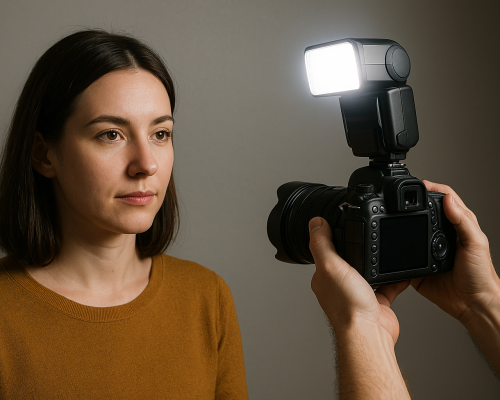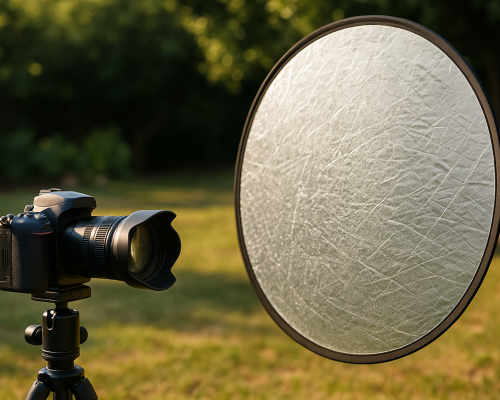Making mistakes is natural — but repeating them shouldn’t be the norm
Starting out in photography is like learning a new language. At first, you mispronounce, mix up tenses, and forget words. But little by little, you improve. In photography, the process is no different. Mistakes are part of the journey — often necessary. But repeating the same errors for too long slows down your growth, especially when they’re avoidable with awareness and practice.
This guide is designed to help you grow faster by recognizing the most common mistakes beginner photographers make. More importantly, it offers actionable solutions and practical advice from someone who understands the learning curve, not just from theory but from real, hands-on experience.
1. Ignoring the importance of light — the true core of photography
Light matters more than the gear
Many beginners focus too much on cameras, lenses, and accessories, and completely overlook the one thing that truly defines an image: light. Photography, after all, is the art of painting with light.
How to avoid this mistake
Train your eye to observe how light behaves — its direction, softness, warmth, and shadows. Try shooting at different times of the day. Early morning and late afternoon light (the golden hour) is softer and more flattering. Indoors, practice using natural light from a window, and avoid harsh overhead lighting. Even shadows, when used creatively, can become key storytelling elements.
2. Relying too much on automatic mode
Auto mode is comfortable — and creatively limiting
Auto mode is helpful when you’re just starting out, but it doesn’t allow for creative control. Your camera doesn’t know if you want a blurry background, a dramatic silhouette, or to freeze a fast-moving subject. It simply tries to balance exposure based on light data.
What to do instead
Start experimenting with semi-automatic modes. Aperture Priority lets you control the depth of field, while Shutter Priority helps you freeze or blur motion. As you gain confidence, move into full manual mode. Compare results with different settings to understand how each adjustment impacts the final image. This hands-on experimentation is where real growth begins.
3. Overlooking composition
Composition guides the eye and creates intention
A poorly composed image can make even the most beautiful subject look dull or confusing. One common beginner mistake is placing everything dead center without thinking about balance or storytelling.
How to improve this
Start with the rule of thirds, but don’t stop there. Use leading lines, natural frames (like doors or windows), symmetry, and visual hierarchy. Eliminate distractions from the background, and guide the viewer’s eye deliberately. Think of each shot as a visual story: what are you showing, and how are you leading someone into that story?
4. Always shooting from the same angle
Perspective changes everything
Shooting only from eye level quickly leads to flat, repetitive images. You see the world that way all day — your camera doesn’t need to show the same perspective.
How to break the habit
Kneel down, lie on the ground, shoot from above, tilt your frame slightly, or experiment with reflections and shadows. A shift in angle can turn an ordinary moment into something visually powerful. Try including foreground elements to add depth and dimensionality.
5. Believing gear is everything
The camera doesn’t make the photographer
One of the biggest misconceptions is that better gear equals better photos. But great photography isn’t about having the most expensive lens — it’s about seeing differently.
The real solution
Work with what you have. Even a smartphone can produce stunning images when you understand light, timing, and composition. Mastering these fundamentals will always matter more than the latest specs. Gear is a tool, not a shortcut to talent.
6. Not reviewing your own photos
Growth comes through reflection
Many beginners shoot dozens (or hundreds) of photos but never take the time to critically review their work. Without reflection, it’s hard to identify patterns or areas for improvement.
How to build a review habit
After each shoot, pick your 10 best images and evaluate them honestly. Ask yourself: What worked? What didn’t? Is the focus sharp? Is the composition clean? Did I capture what I intended to? This review process solidifies learning and helps you move forward with purpose.
7. Overediting — or not editing at all
Editing is part of the process, not a fix-it tool
Some beginners go overboard with filters, saturation, and contrast. Others fear editing and leave everything raw — even when minor adjustments could elevate the photo significantly.
How to strike a balance
Use editing to enhance, not mask. Start with basic adjustments: exposure, white balance, contrast, sharpness. Avoid extreme color shifts unless you’re intentionally creating an artistic style. Let your edits support the image’s emotion, not distract from it. Keep it natural, clean, and cohesive.
8. Missing focus
A blurry image loses its power
Poor focus ruins even the best-composed images. Many beginners trust the camera to pick the focus point — which often lands on the background or the wrong subject.
How to improve
Use manual focus or touch-to-focus on your subject’s eyes, especially in portraits. Be cautious with very wide apertures (like f/1.4 or f/1.8), which give you shallow depth of field and a smaller margin for error. Learn your camera’s autofocus modes and test them in different situations.
9. Shooting without intention
Shooting without thinking leads to forgettable images
Clicking the shutter isn’t the same as creating an image. If you’re just capturing things because they’re there, your photos may lack depth or meaning.
How to photograph with purpose
Pause before shooting and ask: Why am I taking this photo? What’s the emotion or story? How can I show it best? With that mindset, every click becomes more deliberate — and your images will start to connect on a deeper level.
10. Ignoring the background
The background tells half the story
A distracting or messy background can ruin an otherwise beautiful image. Unfortunately, beginners often focus so much on the subject that they forget to check what’s behind it.
How to fix this
Scan the frame before you shoot. Are there poles “growing” out of people’s heads? Is the background too busy? Try changing your angle, moving a few steps, or using a wider aperture to blur the background. Clean, intentional backgrounds make subjects pop and enhance storytelling.
11. Comparing yourself to experienced photographers
Inspiration is helpful — unhealthy comparison isn’t
It’s easy to look at amazing photos online and feel like you’ll never be that good. But this kind of comparison leads to frustration and often blocks growth.
A better mindset
Compare your current work to your past work. Celebrate your progress. Understand that those photographers you admire have been shooting for years — and still make mistakes. Use their images as motivation, not as a measure of your worth.
12. Not practicing enough
Photography is a muscle — use it or lose it
The best way to improve isn’t by watching tutorials or reading books. It’s by picking up the camera and shooting — regularly.
How to practice more
Set small challenges: one theme per week, one photo per day, one object captured in five ways. Use what you have: your home, pets, plants, light from a window. Consistency builds skill and confidence.
13. Being afraid to make mistakes
Fear holds more people back than technical limits
A lot of beginners avoid trying new things because they’re afraid of failing. They don’t share their work, don’t experiment, don’t ask questions — and as a result, they don’t grow.
The real lesson
Mistakes are how you learn. Every blurry photo, every overexposed frame, every awkward composition teaches something. Keep trying. Keep adjusting. And most importantly, keep showing up.
14. Only photographing the obvious
The most powerful images often come from unnoticed details
Beginner photographers often focus on what’s already “pretty”: sunsets, flowers, smiling people. While these can be beautiful, they’re not the only stories worth telling.
How to see differently
Pay attention to textures, shadows, reflections, imperfect objects, and everyday routines. Train your eye to find the extraordinary in the ordinary. Your unique perspective is what makes your photography stand out.
15. Quitting too soon
Progress in photography isn’t linear
Some days, your photos will feel amazing. Others, they’ll seem flat or uninspired. That’s normal. But too many people quit because they don’t see rapid improvement.
The truth
Photography takes time. But every shoot, every edit, every moment you spend thinking visually is building your skill. Be patient. The only way to fail is to stop.
Conclusion: Mistakes are teachers — if you listen to them
Photography isn’t about perfection. It’s about observation, storytelling, and expression. You’re going to make mistakes. A lot of them. But each one brings you closer to developing your own visual voice.
Instead of fearing failure, learn to welcome it. Practice intentionally. Photograph what matters to you. Ask questions. And keep your love for the craft at the center of everything you do.
Because in the end, the best photos aren’t the most technical — they’re the ones that make someone feel something.









